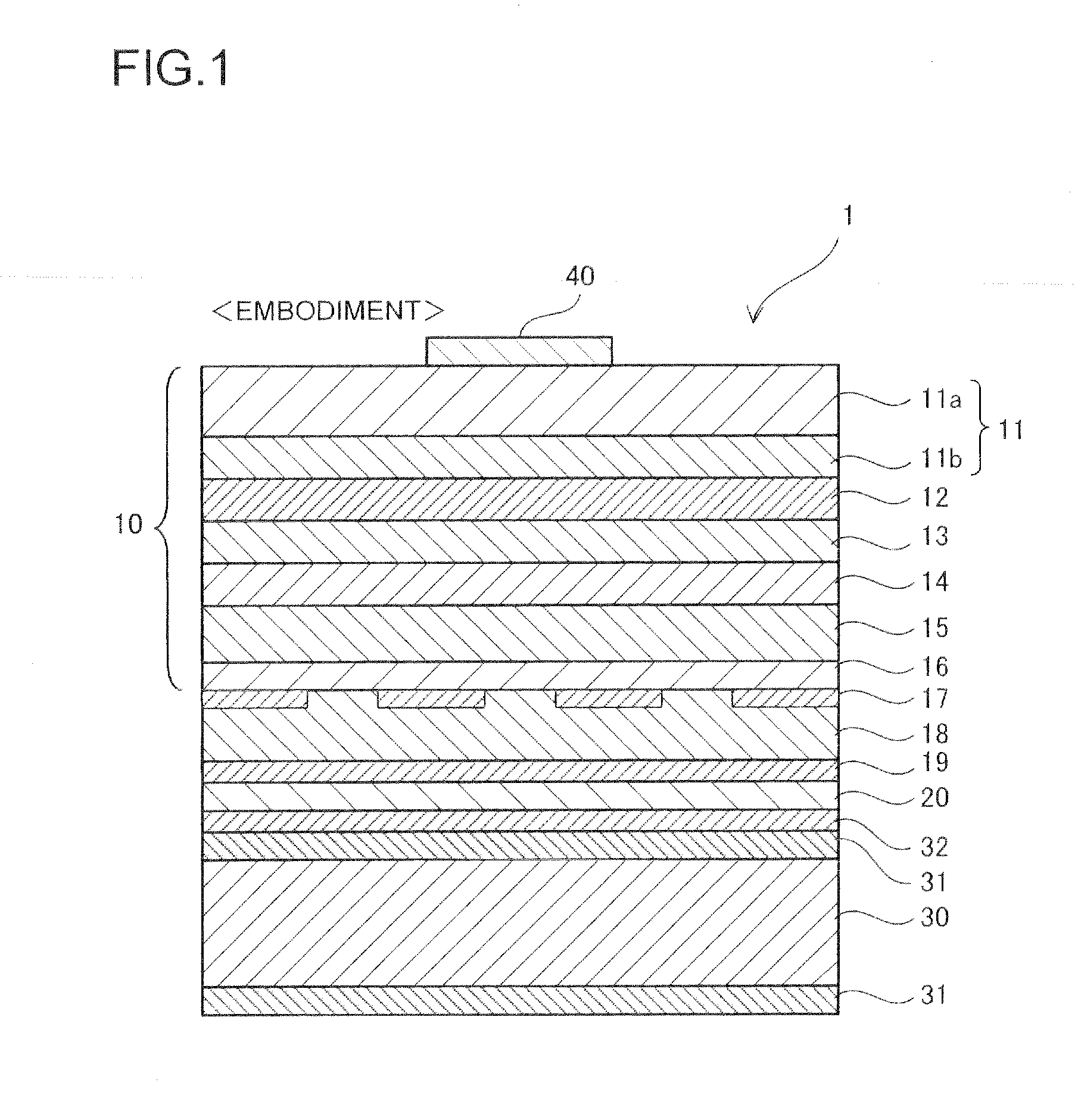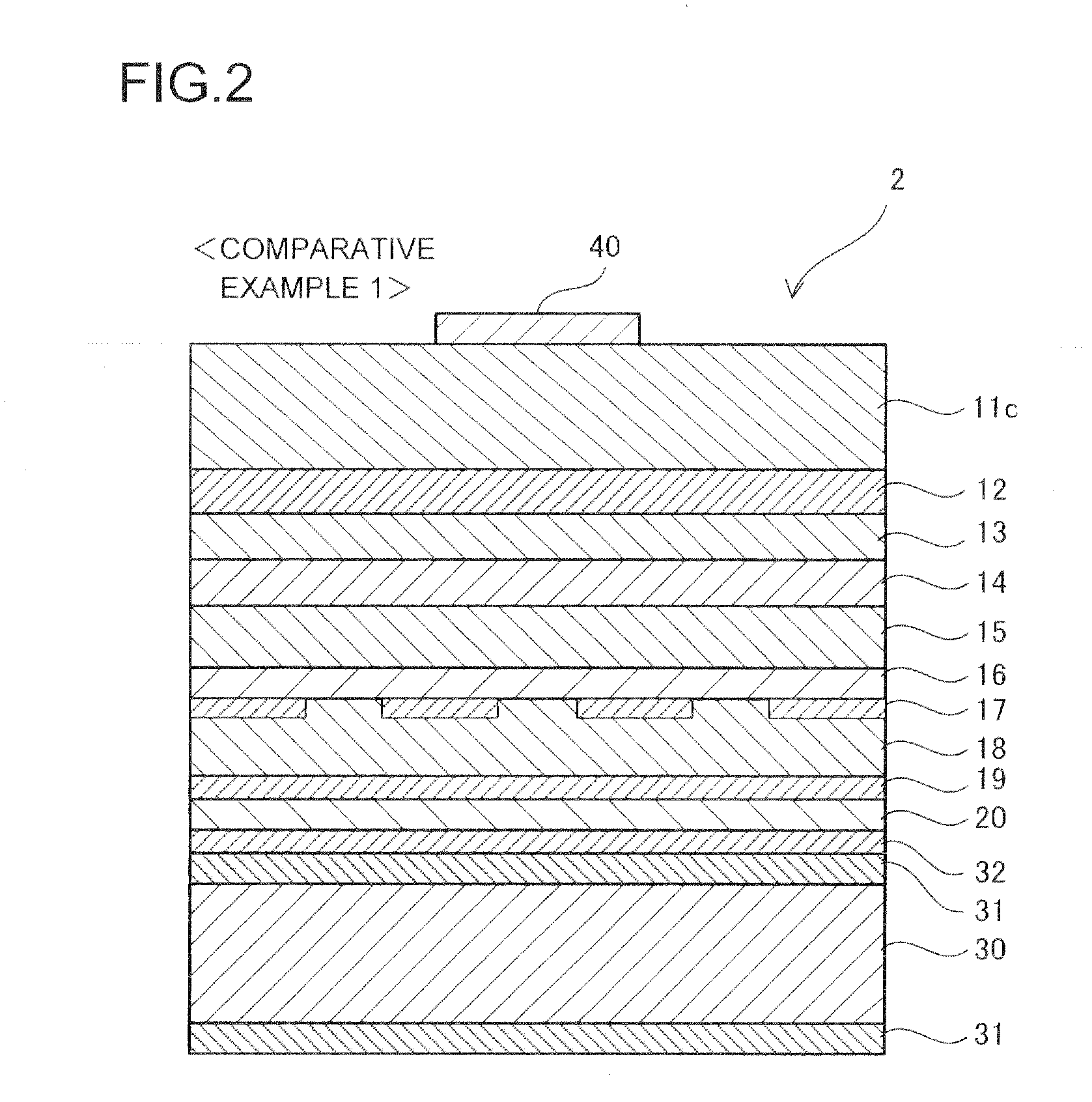Semiconductor light-emitting device
a technology of semiconductors and light-emitting devices, which is applied in the direction of semiconductor devices, basic electric elements, electrical appliances, etc., can solve the problems of high product deficiency or defect rate, and achieve the effects of stable operation, reduced reverse withstand voltage vr defect rate, and high yield
- Summary
- Abstract
- Description
- Claims
- Application Information
AI Technical Summary
Benefits of technology
Problems solved by technology
Method used
Image
Examples
embodiments
[0028]There follows a description of embodiments of the present invention made with reference to the accompanying drawings. In the drawings indicated below, configurational elements and portions substantially identical or equivalent are denoted by the same reference numerals.
[0029]FIG. 1 is a cross-sectional view showing the configuration of a semiconductor light-emitting device 1 according to an embodiment of the invention. The light-emitting device 1 has a “joined” or “bonded” structure in which a semiconductor film 10 composed of an AlGaInP-based material is “joined” or “bonded” via a reflective electrode layer 18 to a conductive support substrate 30 which is prepared separately from a growth substrate used for crystal growth.
[0030]The semiconductor film 10 comprises an n-type clad layer 11 composed of a first n-type clad layer 11a and a second n-type clad layer 11b, an active layer 12, and a p-type clad layer 13. The active layer 12 is provided between the second n-type clad lay...
PUM
 Login to View More
Login to View More Abstract
Description
Claims
Application Information
 Login to View More
Login to View More - R&D
- Intellectual Property
- Life Sciences
- Materials
- Tech Scout
- Unparalleled Data Quality
- Higher Quality Content
- 60% Fewer Hallucinations
Browse by: Latest US Patents, China's latest patents, Technical Efficacy Thesaurus, Application Domain, Technology Topic, Popular Technical Reports.
© 2025 PatSnap. All rights reserved.Legal|Privacy policy|Modern Slavery Act Transparency Statement|Sitemap|About US| Contact US: help@patsnap.com



